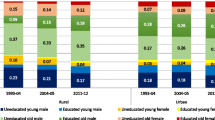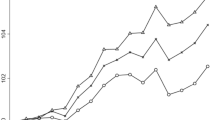Abstract
Transition has created a dual wage structure in Russia. Wages in the emerging private sector are almost twice the level of government sector wages. Compared to Western wage patterns, Soviet wages were relatively high for blue collar workers, especially those in skilled trades. For many highly educated occupations, Soviet wages were relatively low. The transition has disrupted this wage structure, aggravating its anomalies, increasing the dispersion within occupations, and eliminating any correlation with prestige rankings and length of education. This paper utilizes wage data, prestige rankings and years of schooling for 62 occupations in the USSR (1980), Russia (1992) and, for comparative purposes, for the U. S., U. K. and Denmark.
Similar content being viewed by others
Author information
Authors and Affiliations
Additional information
*My thanks are due Gregory Grossman and Davida J. Weinberg at Berkeley, and Marina Mozhina and Lilya Ovcharova in Moscow. Financial support from the Danish Social Science Research Council and from the NATO Fellowship Programme is gratefully acknowledged.
Rights and permissions
About this article
Cite this article
Aage, H. Russian Occupational Wages in Transition. Comp Econ Stud 38, 35–52 (1996). https://doi.org/10.1057/ces.1996.38
Published:
Issue Date:
DOI: https://doi.org/10.1057/ces.1996.38




